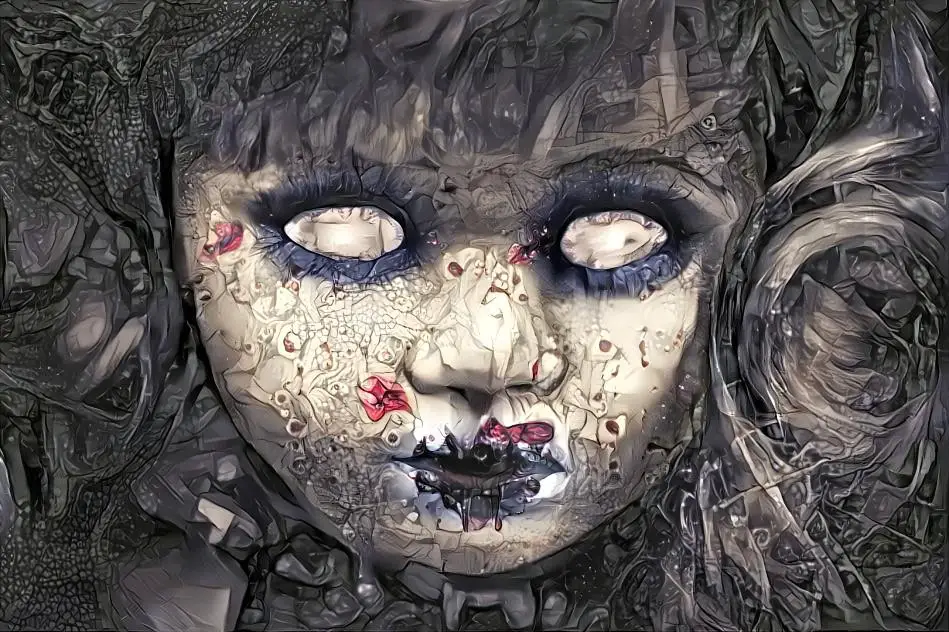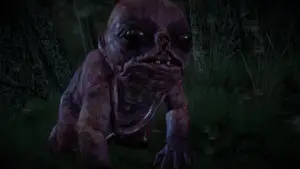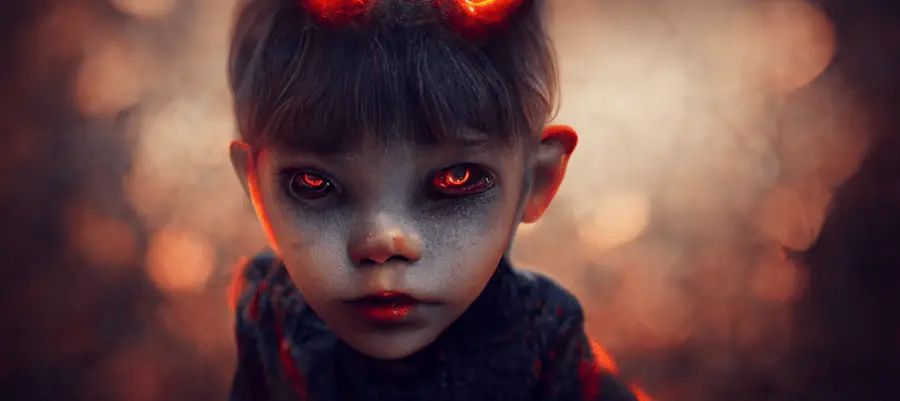Share the Lore!
By: Skylar Black
What is a Myling?
There are no places in this world that lack ghost stories – whether it’s a malevolent poltergeist, a shrieking banshee, or simply a dark figure that you can only see out of the corner of your eye, we all live alongside our local ghosts.
In Scandinavia, there’s a special category for the ghosts of murdered children – mylings.
These terrifying creatures are said to haunt woods and rural areas, accosting lone travelers and attempting to force them to take the ghost to a graveyard.
To the weak or unwary, an encounter with these vengeful spirits could spell their doom.
Tragic Deaths of Children
Mylings are the restless spirits of children that were abandoned by their parents to die. They’re also known as mylingar (Swedish), utburd (Norwegian), or ihtiriekko/liekkö/sikiӧ (Finnish) – most of these names translate roughly to “outside” or “outsider.”
While most tales assume that mylings arise specifically from instances where infants or small children are left in the woods to die of exposure, other interpretations state that a myling can be created in any situation where a child is killed by their parents.
This includes abandonment because they were unwanted, murder due to abuse or neglect, and even situations where a parent just wasn’t watching when a child died accidentally.
In any case, the historical basis for these legends comes from a very real historical horror – the trend of infanticide.
Horrible History of Myling Lore
Infanticide was a major problem in multiple cultures throughout history for a wide variety of reasons, including but not limited to:
- An inability to care for another child
- The child’s birth circumstances were not socially sanctioned (eg. being born out of wedlock, birth as the result of incest/rape, etc.)
- Population control
- Birth defects or abnormalities
- Religious offerings (especially of firstborn children in ancient Egypt, Greece, Rome, and India)
- Contraception
- Perceived unwanted qualities (superstitions related to time or place of birth, girl-child infanticide, etc.)
In any case, infanticide was so horrifically common in societies before the advent of birth control that many legends have emerged around the practice – one of these happens to be the Myling.
The usual method of creating a myling cannot be ignored, either – the practice of simply leaving an infant in the woods to die of exposure or be eaten by animals was especially prevalent in cases where the birth was not socially sanctioned, and thus many of these children were disposed of in secret.

This may be why the ghosts are always described as enraged.
Notably, this theme sits in the background of a well-known fairytale – Hansel and Gretel.
In the original tale, Hansel and Gretel weren’t just going for a walk in the forest – they had been abandoned by their parents because the family could no longer feed them.
This makes their entrance into the witch’s candy cottage all the more sinister – perhaps, in another version of the tale, the two children would have been fated to become mylings instead…
The Heavy Souls of Small Ghosts
Stories of mylings generally fall into two categories.
The first involves one or more spirits waylaying a lone traveler at night in the woods. The spirit will jump on its victim’s back and demand to be carried to the nearest graveyard.
This might seem like an easy task, but a victim will quickly discover that the odds are not in their favor – despite being the spirits of infants and children, mylings are said to be enormous, and will only get heavier as their victims continue to carry them.
The reason for the increase in weight is uncertain – in some tales, mylings get physically heavier as they near a graveyard because they’re transforming into a more physical being, while other tales state that they’re draining the life force of their victim, making them weaker and the weight of the myling more noticeable.
In any case, carrying a myling is said to be such a burden that you would begin to sink into the ground as you walked if you carried them for long enough.
The other category of myling sightings cast them as the tormentors of those who killed them.
These small ghosts haunt the homes of their guilty parents; in some stories, their presence can initially be mistaken for a “normal” haunting. That is, until, the myling begins singing in the night, telling everyone of their parents’ sins.
In some tales, the myling will eventually kill its parents in the ultimate act of revenge, or its singing will drive them insane.
The Bergslagen Myling
This version of the tale is a famous urban legend from the Bergslagen region of Sweden.
It follows a crofter (a historical term for a tenant farmer, especially in rural areas) who is returning home from the tavern one night when he encounters a strange-looking young boy. The boy asks him, “Grandpa, Grandpa, can I breastfeed?”
The crofter refuses, but the boy continues to pester him as they move towards his home. Eventually, the crofter replies to the request with “If you have someone to breastfeed you, then do so, but you mustn’t breastfeed me.”
The boy runs away, leaving the crofter to embark on the rest of his journey alone.
When the crofter returns home, he finds a horrifying scene – his daughter is dead in her bed. Blood flows from her breasts, as though something has been biting or sucking on them.
Later, the crofter discovers that his daughter became pregnant out of wedlock and either killed or abandoned the child.
How to Get Rid of Mylings
Because of the horrible nature of their deaths, it’s assumed that mylings are eternally seeking the respect that is paid to others who die.
If you’ve been set upon by a myling, the only way to get them to leave you alone is to take them to a cemetery so that their spirit may rest.

For other mylings, this requirement is more physical – they may demand that you find their remains and inter them properly in consecrated ground.
This can prove incredibly difficult – if the child has been dead for a long time or the area where it was abandoned was developed after it died, it could be nearly impossible to find their physical remains.
In other cases, a guilty parent may have hidden the remains, making finding them equally impossible.
Yet another – perhaps easier – way to rid yourself of a myling is to give them a name.
Many victims of infanticide are killed without a name, and they may be seeking this sign of love and respect from beyond the grave. Most myths specify that a myling must ask you for a name before this method will work, so it’s not necessarily a universal fix.
Mylings in Pop Culture
The horrifying nature of the myling and their inherent moral associations have made the creature a fascination for modern pop culture.
The creature appeared in an episode of the cult TV series Supernatural (Season 12 Episode 3 “The Foundry) in which Dean and Sam must investigate deaths linked to the sound of a crying infant luring people into an abandoned house.
Myling lore has also appeared prominently in The Witcher universe, though they’ve abandoned the name in favor of the more evocative “Botchling” moniker.
Botchlings are hideous creatures that are formed from the improperly buried bodies of unwanted or stillborn infants. The creatures sap the life force of pregnant women by sitting next to their beds at night, draining them of strength until they can feed on their blood and the blood of their unborn child.
A Botchling is one of the bosses in The Witcher 3, but killing them isn’t the only option – if one performs an elven naming ritual on it and buries it underneath the threshold of its family home, the creature will transform into a lubberkin, which is a protective spirit of hearth and home.
References:
Articles The Nordic dead-child tradition: Nordic dead-child beings: a study in comparative religion (Juha Pentikäinen, 1968) Supernatural Wiki - Myling Encyclopedia Brittanica - Infanticide The Witcher Wiki - Botchling The Witcher Wiki - Lubberkin Books The Types of Swedish Folk Legend by Bengt af Klintberg
